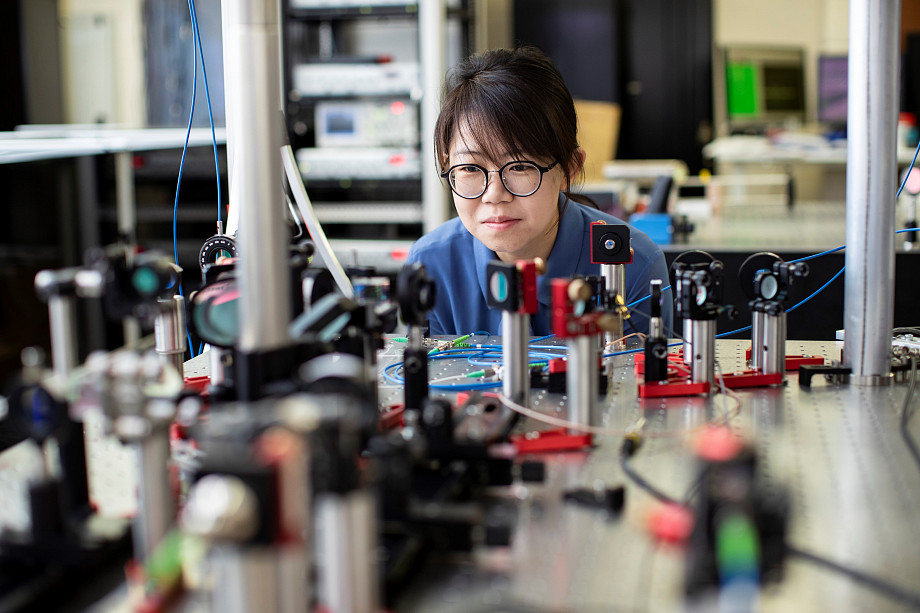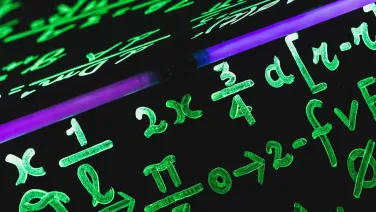Teleportation fidelity the big winner in the quantum lottery

Running your quantum system as a lottery turns out to be a way to improve the transmission of data via quantum teleportation.
Researchers at the Research School of Physics used a probabilistic twist to develop a new transmission protocol that set a new record in data transmission: 92 percent fidelity, which more than halves the loss in previous experiments.
The new protocol will enable encrypted data, for example in finance or military settings, to be sent with higher accuracy.
“Our protocol improves the capability of the quantum teleporter to protect fragile quantum states during long-distance transmission, making the system resilient to noise and loss,” said lead researcher Dr Sophie Jie Zhao, from the Department of Quantum Sciences and the CQC2T ARC Centre of Excellence, who is the lead author in the team’s publication in Nature Communications.
Quantum teleportation is already being used in encrypted networks. It allows information to be shared instantly between linked, or entangled, quantum objects.
However, the entanglement between the objects can easily be destroyed by interactions with external entities. This at once makes quantum teleportation extremely secure – as any tampering instantly destroys the data transfer – but also very prone to degradation through noise due to environmental interactions.
With entanglement degradation limiting their existing teleportation’s fidelity and distance, the team set their mind to improving the teleportation efficacy by leveraging the paradoxes of the Heisenberg Uncertainty Principle.
In these experiments, the ends of the teleportation link are two photons from the same source, which creates entanglement in their properties. These photons are sent to two separate locations, untouched, which leaves their properties unknown, and able to appear in any possible state.
The signaller then gets the information to be teleported to interact with one of the photons, and measures the photon’s properties – in this case amplitude and phase – making the photon choose a state. This causes the other photon (the receiver) to instantly choose its state as well. Because the two photons are linked, information about the signaller’s experiment can be deduced by the receiver.
This deduction relies on the sender separately conveying to the receiver the result of the experiment. This does not reveal the teleported information, as it is the result of the mashup between that information and the original photon. However, this result acts as a key that allows the receiver to work backwards from the result at their end and disentangle the teleported information.
It is crucial that the sender can’t know what the teleported information is – that would constitute a measurement and collapse the quantum information, said University of Queensland researcher and CQC2T member Professor Tim Ralph.
“The information needs to be hidden in uncertainty so the sender doesn’t know exactly what they are sending. The more they know about the signal, the more they destroy it,” he said.
Quantum uncertainty resulting from the mixing of possible states can be cancelled out with the key, however uncertainty resulting from noise from entanglement degradation is harder to cancel out.
To filter this noise the team leveraged the fact that the mixed states have a Gaussian distribution. They realised that a lottery, a protocol in which a subset of the measurements was selected randomly in a way that actually narrowed the Gaussian distribution, while other measurements were randomly discarded, could help filter out noise.
“Adding an element of chance to our protocol has the effect of distilling the quantum information,” Dr Zhao said.
“The post-selection effectively biases the Gaussian distribution in favour of high-amplitude outcomes than outcomes close to the origin of phase space, hence acting as an amplifier. Since this amplification is noiseless and takes over from part of the amplification applied by the receiver in standard teleportation protocols, the teleported states suffer less from the noise added due to imperfect entanglement.”
An interesting quirk of the system is that the balance between the probabilistic factor and the noise reduction can be tuned. By simply reducing the probability of measurements being selected in the protocol the teleportation fidelity can be increased.
To achieve their record 92 percent fidelity the team used a success rate of less than one in a hundred thousand, sampling the system for around two hours.
In the new protocol, the success of the teleportation relies on the stability of the laser system, instead of being limited by environmental noise, Dr Zhao said.
“You can always get better fidelity if you are willing to sacrifice your success rate. But then you need a longer sampling time.
“If the system were stable enough to allow us to sample for say, 20 hours, then I believe we could go above 95 percent,” she said.
This article was first published by ANU Research School of Physics.



